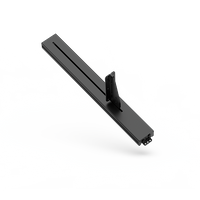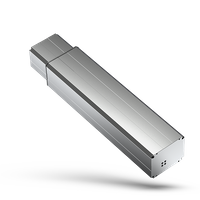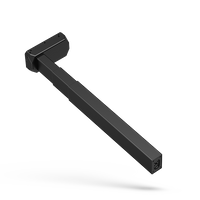- Home
-
- TF Integrated Workstation
- TT Integrated Station
- TS Single-Person Station
- TO Single-Person Station
- Advanced Office Table
- Manager Table
- Odette Conference Table
- Lifting White Board
- Lifting Podium
- Working Port
- Zen Standing Desk
- Lifting Coffee Table
- Home Standing Desk
- Nature Standing Desk
- Invictus Gaming Desk
- Study Desk
-
-
- Electric Hospital Bed
- Image Equipment
- Examination Bed/Clinic Bed
- Operation Table and Chair
- Infant Incubator
- Independent Weighing System
- Home Care Bed
- Patient Lift
- Wheelchair
- Toilet Lift
- Bath Lift
- Shower Trolley
- Smart Rollator Walker
- Ophthalmic Workstation
- Treatment Chair
- Facial Chair
- Traction Table
- Massage Chair
- OT Training Equipment
- Stand-up Application
- Rehabilitation Robot
-
-
- Photovoltaic Application
- Photothermal Application
- Energy Storage Container
- Tractor
- Seeder
- Fertilizer Spreader
- Harvester
- Rotary Cultivator
- Climate Control System
- Automatic Feeding System
- Excavator
- High Altitude Work Platform
- Garbage Truck
- Street Sweeper
- AMR Automated Guided Vehicle (AGV) and Autonomous Mobile Robot (AMR)
- Forklift Accessories
- Palletizing Collaborative Robots
- Packaging Machine
-
-
Electric Lifting Column For Desk
Views: 0 Author: Site Editor Publish Time: 2024-07-18 Origin: Site
What is an Electric Lifting Column ?
An electric lifting column is a type of actuator designed specifically for vertical lifting applications. It combines the principles of an electric linear actuator with a telescoping column structure to provide smooth, stable, and adjustable height movement. Here are the key components and functions of an electric lifting column :
Components:
Telescoping Sections: The column is made up of multiple nested sections that extend and retract, allowing for height adjustment.
Electric Motor: Powers the lifting mechanism.
Screw Mechanism: Typically a lead screw or ball screw, converting the rotational motion of the motor into linear motion.
Housing: Encloses the motor and screw mechanism, providing structural support and protection.
Control System: Manages the operation of the lifting column, including movement speed, position, and limits.
Limit Switches: Ensure the column operates within its designed range of motion, preventing overextension or retraction.
Functions:
Height Adjustment: Provides smooth and precise vertical movement, allowing for the adjustment of the height of desks, tables, or other equipment.
Stability: Designed to handle vertical loads and maintain stability during operation, ensuring safe and reliable lifting.
Load Capacity: Can support various weights depending on the design and application, ranging from light to heavy-duty uses.
Working Mechanism:
Power Supply: The electric motor receives power from an external source (AC or DC).
Motor Activation: When the motor is activated, it rotates the screw mechanism inside the column.
Screw Mechanism: The rotational motion of the screw is converted into linear motion, causing the telescoping sections to extend or retract.
Telescoping Movement: The nested sections slide smoothly within each other, adjusting the height of the column.
Control System: The movement can be controlled precisely using an electronic control system, often with a remote control, switch, or programmable controller.
Limit Switches: Limit switches ensure the column stops moving at its maximum extension or retraction points, preventing damage.
Electric Lifting Column For Desk
An electric lifting column for a desk is a type of actuator system designed specifically to adjust the height of a desk smoothly and quietly. These columns are commonly used in sit-stand desks to provide ergonomic flexibility, allowing users to alternate between sitting and standing positions throughout the day. Here are the key features, components, and benefits of using electric lifting columns in desks:

Key Features:
Adjustable Height: Allows for seamless height adjustment to accommodate sitting and standing positions.
Smooth and Quiet Operation: Designed for minimal noise and smooth transitions between heights.
Load Capacity: Can support the weight of the desktop and any items placed on it, including monitors, computers, and other office equipment.
Ease of Use: Typically operated via a control panel or remote, allowing for easy adjustments.
Programmable Settings: Some models come with memory presets to quickly return to preferred heights.
Components:
Telescoping Columns: The lifting mechanism consists of nested sections that extend and retract to adjust the height.
Electric Motor: Powers the lifting mechanism.
Control Unit: A control panel or remote to adjust the height and store presets.
Screw Mechanism: Converts the rotational motion of the motor into linear motion to move the telescoping columns.
Limit Switches: Prevent overextension and ensure safe operation.
Working Mechanism:
Power Supply: The electric motor receives power from an electrical outlet.
Motor Activation: When the user activates the control unit, the motor turns the screw mechanism.
Height Adjustment: The screw mechanism causes the telescoping columns to extend or retract, adjusting the desk height.
Control Unit: The control panel or remote allows the user to adjust the height and store preset positions.
Benefits:
Ergonomic Flexibility: Allows users to switch between sitting and standing positions, promoting better posture and reducing the risk of health issues associated with prolonged sitting.
Improved Productivity: Studies have shown that alternating between sitting and standing can improve focus and productivity.
Customizable: Users can adjust the desk to their preferred height for various tasks, enhancing comfort and efficiency.
Space Efficiency: Electric lifting columns are compact and can be integrated into various desk designs without taking up much space.
Durability: High-quality electric lifting columns are built to last, with robust materials and reliable mechanisms.
Applications:
Home Offices: Provides flexibility for remote workers to create a more ergonomic workspace.
Corporate Offices: Supports employee health and productivity by offering adjustable workstations.
Educational Institutions: Suitable for classrooms and labs where adjustable desks can accommodate different activities and user preferences.
Healthcare Settings: Used in workstations for healthcare professionals who need to alternate between sitting and standing.
Example Usage: Imagine you have an electric standing desk equipped with lifting columns. When you feel the need to stand, you simply press a button on the control panel to raise the desk to a comfortable standing height. If you have preset positions stored, you can quickly switch between them with a single button press. The transition is smooth and quiet, and the desk remains stable at all heights, allowing you to continue working without interruption.
Electric lifting columns for desks provide a versatile and ergonomic solution for modern workspaces. They enable adjustable height settings, promoting better health and productivity by allowing users to alternate between sitting and standing positions effortlessly. These columns are easy to use, reliable, and can be integrated into various desk designs to suit different environments and user needs.
QUICK LINKS























